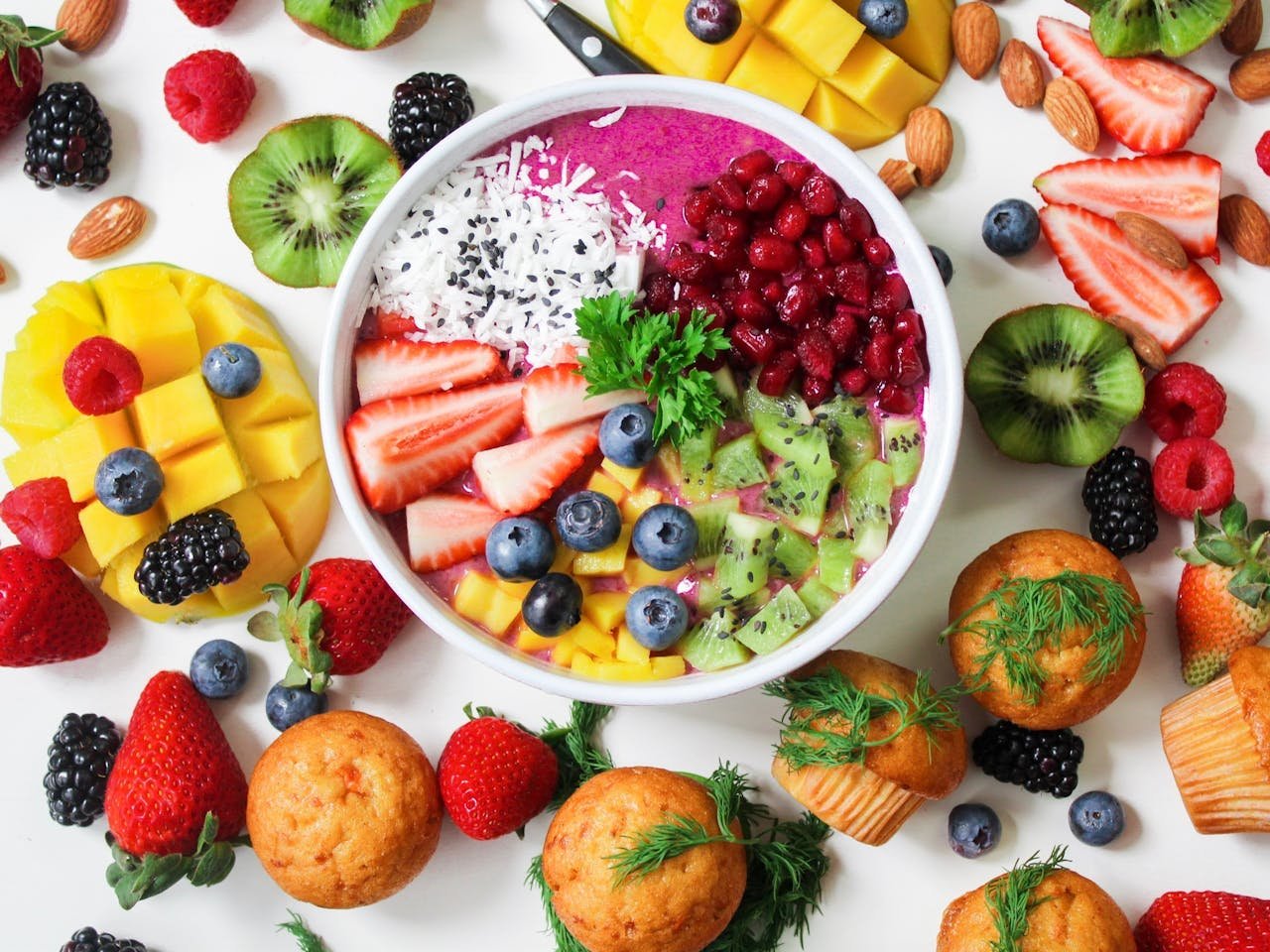
Vegetable pakoras are a versatile dish that can be customized to suit your taste preferences
. The basic recipe calls for a mixture of vegetables such as onions, potatoes, and spinach,
but you can add other vegetables like bell peppers, cauliflower, or carrots for added flavor and texture.
The vegetables are thinly sliced or grated and then mixed with a batter made from chickpea flour, rice flour, and a combination of spices.
To make the batter, you will need chickpea flour, also known as besan,
which is a staple in Indian cooking. This gluten-free flour adds a nutty flavor and crispiness to the pakoras.
Rice flour is added to the batter to make it lighter and crispier.
A combination of spices such as cumin, coriander, turmeric,
and chili powder is added to the batter to give the pakoras their distinct flavor.
You can adjust the amount of spices according to your taste preferences.
Once the batter is ready, you can start preparing the vegetables.
The onions are thinly sliced, while the potatoes are peeled and cut into thin rounds.
If you are using other vegetables like bell peppers or cauliflower,
make sure to cut them into small pieces so that they cook evenly.
The vegetables are then mixed with the batter, ensuring that each piece is coated evenly.
To cook the pakoras, heat oil in a deep pan or a kadai.
The oil should be hot enough so that the pakoras sizzle when added to it.
Carefully drop spoonfuls of the vegetable batter into the hot oil and fry them until they turn golden brown and crispy. Make sure to fry the pakoras in small batches so that they cook evenly and don’t stick together.
Once the pakoras are cooked, remove them from the oil using a slotted
spoon and drain them on a paper towel to remove any excess oil.
Serve the vegetable pakoras hot with mint chutney or tamarind chutney for a delicious and satisfying snack.
They can also be served as an appetizer with a cup of hot chai or as a side dish with a main course meal.
Vegetable pakoras are not only delicious but also a great way to incorporate more vegetables into your diet.
They can be enjoyed by people of all ages and are perfect for parties or gatherings. So why not try making vegetable pakoras at home and impress your family and friends with your culinary skills?
Ingredients:
- 1 cup gram flour (besan)
- 1/4 cup rice flour
- 1/2 teaspoon turmeric powder
- 1/2 teaspoon red chili powder
- 1/2 teaspoon cumin seeds
- 1/2 teaspoon coriander powder
- 1/2 teaspoon garam masala
- 1/2 teaspoon baking soda
- Salt to taste
- 1 onion, thinly sliced
- 1 potato, peeled and thinly sliced
- 1 carrot, grated
- 1/2 cup spinach, chopped
- 1/4 cup cilantro, chopped
- Oil for deep frying
Now that we have all the ingredients ready, let’s move on to the preparation of this delicious snack.
To begin with, take a large mixing bowl and add the gram flour, rice flour, turmeric powder,
red chili powder, cumin seeds, coriander powder, garam masala, baking soda, and salt.
Mix all the dry ingredients well until they are evenly combined.
Once the dry ingredients are mixed, it’s time to add the thinly sliced onion, potato, grated carrot,
chopped spinach, and cilantro to the bowl. These vegetables will not only add flavor but also provide a
delightful crunch to the pakoras. Gently mix the vegetables with the dry ingredients,
ensuring that they are well coated with the flour mixture.
Now, it’s time to heat the oil for deep frying. Take a deep frying pan or a
kadai and pour enough oil to submerge the pakoras. Heat the oil on medium-high heat until it
reaches the desired temperature. To check if the oil is hot enough, drop a small portion of the
pakora batter into the oil. If it sizzles and rises to the surface, the oil is ready for frying.
Using a spoon or your hands, carefully drop small portions of the pakora batter into the hot oil.
Fry the pakoras in batches, making sure not to overcrowd the pan.
This will ensure that the pakoras cook evenly and become crispy.
Fry the pakoras until they turn golden brown and crispy on all sides.
Once the pakoras are cooked, remove them from the oil using a slotted spoon
and transfer them to a plate lined with paper towels. This will help absorb any excess oil.
Repeat the frying process with the remaining batter until all the pakoras are cooked.
Serve the hot and crispy pakoras with your favorite chutney or sauce.
These pakoras make for a perfect evening snack or a delicious appetizer
for parties and gatherings. Enjoy the burst of flavors and textures in every bite
of these delightful gram flour fritters. To enhance the flavor and texture of
the vegetable pakoras, you can add some additional ingredients to the batter.
Consider incorporating finely chopped green chilies for a spicy kick,
grated ginger for a hint of warmth, and a pinch of asafoetida for a unique flavor.
These ingredients will not only elevate the taste of the pakoras but also add a delightful aroma to the dish.
Furthermore, you can experiment with different vegetables to create a diverse assortment of pakoras.
Try adding thinly sliced bell peppers for a crunchy and colorful addition, or include grated
zucchini for a moist and tender texture. The possibilities are endless, and by incorporating a
variety of vegetables, you can create a visually appealing and flavorful platter of pakoras.
To make the pakoras even more indulgent, you can stuff them with a savory filling. For example,
you can mix crumbled paneer (Indian cottage cheese) with spices and herbs,
and then encase it in the vegetable batter. When fried, these stuffed pakoras will have a gooey and delicious center,
adding an extra element of surprise to each bite.
For those looking for a healthier alternative, you can try baking the pakoras instead of deep frying them.
Simply preheat your oven to 375°F (190°C) and line a baking sheet with parchment paper.
Place spoonfuls of the vegetable batter onto the sheet, leaving enough space between each pakora.
Bake for about 20 minutes or until the pakoras are golden brown and crispy. This method significantly
reduces the amount of oil used, making the pakoras a guilt-free snack or appetizer.
No matter how you choose to prepare them, vegetable pakoras are a versatile and delicious dish that
can be enjoyed on various occasions. Whether served as an appetizer at a party or as a comforting snack
on a rainy day, these crispy and flavorful fritters are sure to be a hit. So gather your favorite vegetables,
whip up a batch of batter, and indulge in the irresistible goodness of homemade vegetable pakoras.
Tips:
Here are some tips to help you make the perfect vegetable pakoras:
- Make sure the vegetables are thinly sliced or grated so that they cook evenly.
- You can use any combination of vegetables of your choice. Other popular options include bell peppers, cauliflower, and spinach.
- Adjust the spice levels according to your taste. You can add more or less chili powder depending on your preference.
- Do not overcrowd the frying pan while frying the pakoras. This will ensure that they cook evenly and become crispy.
- Feel free to experiment with different spices and herbs to customize the flavor of your pakoras.
- For added texture and flavor, you can also add some finely chopped onions or grated ginger to the pakora batter.
- To make the pakoras extra crispy, you can add a tablespoon of rice flour or cornstarch to the batter. This will give them a light and crispy texture.
- When frying the pakoras, make sure the oil is hot enough. Test it by dropping a small amount of batter into the oil – if it sizzles and rises to the surface immediately, the oil is ready.
- Once the pakoras are fried, place them on a paper towel-lined plate to absorb any excess oil.
- Serve the pakoras hot with a side of mint chutney or tamarind chutney for dipping.


Discover more from Advance food co
Subscribe to get the latest posts sent to your email.


